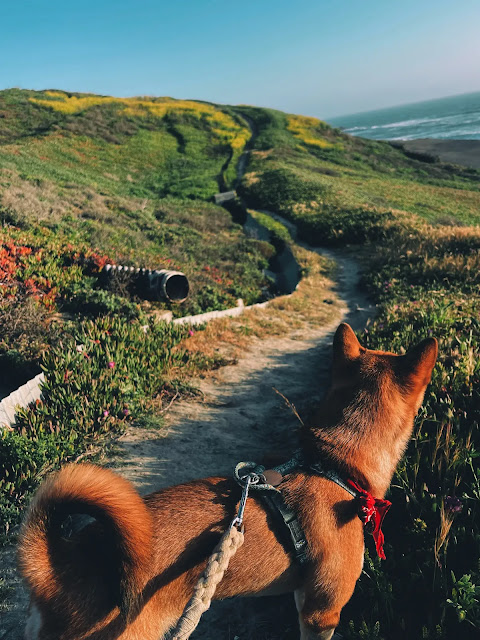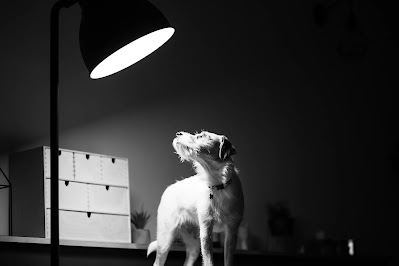Training dogs not to bite
Training dogs not to bite may be an
important part of changing the dog's behavior and controlling some unwanted
emotions, and training dogs not to bite is part of training dogs to obey.
And every breeder should be aware of the appropriate
age to train dogs in order to have a wonderful life with his dog.
Reasons dogs bite their owners
In general, dogs may bite their owners
for many reasons, the most famous of which are when they feel threatened in
some way or when they feel sick.
And dog biting is a natural instinct that
still exists even in domesticated dogs. Therefore, dogs must be trained not to
bite. There are many reasons why dogs bite their owners, including:
· Dogs may bite in
defense of themselves, their territory, or a person, for example a mother dog
will fiercely protect her young dogs.
· Sometimes dogs
can't express their pain and they show it in a few different ways, such as
biting and barking.
· Exciting dogs
may lead to biting. For example, a dog should not be woken up, approached
suddenly, or put pressure on its hips, especially if it is an old dog.
· Injury and
illness are also common causes of dog biting, so if the dog is feeling ill, he
will not want anyone near him.
· Bite play as the
mouth is an integral part of dog play. The dog may be a little excited while
playing which may lead to biting.
· Like humans, if
a dog feels fearful and threatened, it will protect itself and begin to show
signs of aggression, including biting.
The right age to train dogs
It is essential to start training dogs
not to bite and other behaviors when they are 7 to 8 weeks old, and it is
important to help the dog learn to curb their oral behavior and train dogs not
to bite.
And to
control fear and anxiety in dogs, and it is better to train and deal with the
puppy as soon as he arrives at home and has a proper socialization. For a
start, they can be taught simple obedience commands such as sitting and
staying.
A delay in training dogs not to bite may
result in very poor behavior as the dog's chances of learning how to behave in
a proper and correct manner are lost. The learned behaviors may help the puppy
change as he is able to learn many things at a very early age.
Teaching a dog not to bite
Not biting indicates a dog's ability to
control the strength of his mouth. The trainer assists the breeder in choosing
the best types of domestic dogs. In addition, each breeder must take
responsibility for the dog's behavior, training and keeping it always under
control. The breeder must do what he can to train dogs not to bite. The basics
that must be followed to teach the dog not to bite:
· A dog training
program should be put in place throughout their life so that the lessons
learned are reinforced.
· It is necessary
to make the dog social from a young age so that he can interact with people in
a positive way. Exposing him to many different situations so that he does not
suddenly show signs of aggression.
· The trainer can
help develop a socialization plan between the breeder and the dog. It helps the
breeder learn the dog's body language in order to pay attention to any signs of
a bite.
· A dog should not
be disciplined with violent physical punishment, and it is a good idea to use
positive reinforcement all the time with your dog until his behavior improves.
· It would be a
good idea to have the dog wear a short leash so that it is under your eyes at
all times. I always look for a trainer or professional vet to guide you
properly.
· When a breeder
plays with his dog, he should let him touch your hands and continue to play
with him until he bites hard. Then he warns him loudly to stop biting.
Taming dogs to obey
Training dogs not to bite and to obey can seem
very difficult at first. But proper dog training is the cornerstone of good
canine behavior. Without obedience training dogs will not know how to behave
and will not be healthy and happy, and in order to be well trained there must
be a good plan in the dog owner.
Some equipment and positive
reinforcements must be prepared as dogs respond to immediate rewards. Click
training can be used to train the dog to obey, and games can also be used
during training.
Dog behavior modification
Dogs must be taught the behaviors of checking
and spotting errors. Since checking is the last step in training dogs not to
bite and teach them to do any new behavior.
And modifying the dog's behavior makes
him obedient anywhere, whether in the house or in the garden. But be aware that
reaching the final stages of training does not mean that behavior problems are
resolved and will not reappear.
Therefore, behavior modification should be
practiced in a variety of situations with different levels of distraction.
Sometimes a dog forgets all its training once it changes location.
It is also good to teach the dog
self-control, that nothing is free in life, and that he needs to modify his
behavior in order to gain some things such as food and attention. And now there
are plenty of coaches out there who can help understand behavioral problems before
things get out of hand.
It must be understood that managing dog
behavior and training dogs are two different things, but they are not separate.
They are an important part of any dog training program not to bite.
In conclusion, no one likes to bite so
it is important to start training your dog as soon as possible and encourage
him to bite toys rather than people.
And if the breeder does not know much
about how to train dogs not to bite, he must use either a veterinarian or a
professional trainer to prevent dogs from biting and to know the appropriate
age for training dogs.






